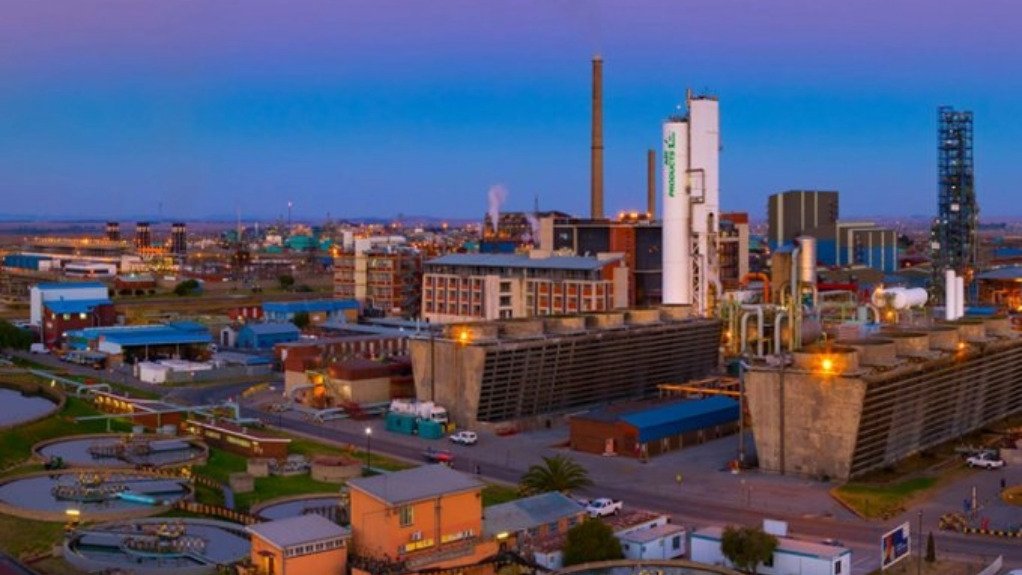Despite consensus among South African businesses, including integrated energy and chemical company Sasol, on the necessity of achieving net-zero emissions by 2050, the debate regarding the pace of this transition continues.
Speaking at the 2024 Coal and Energy Transition Day, held in July at The Country Club Johannesburg, Sasol sustainability VP Shamini Harrington noted that, given Sasol’s sizable economic impact and similarly significant emissions footprint in South Africa, there is an urgency for Sasol to move towards lowering its carbon emissions.
While the exact timeline for coal’s phase-out is uncertain, Sasol is fully committed to reducing its emissions and playing a key role in South Africa’s energy transition.
Harrington noted that, while some stakeholders emphasised the acceleration of the transition, others stressed the importance of addressing social challenges, such as poverty, unemployment and inequality, during the implementation of the transition.
The implication, therefore, is that companies, or stakeholders, will compromise on one aspect while focusing their efforts on the other.
Meanwhile, as part of its efforts to achieve each of these imperatives, Sasol prioritises balancing people, the planet and profit as the company pursues reducing its emissions by 30% by 2030.
Harrington added that Sasol is “pulling on all the levers” to sustain as many jobs as possible and maintain its economic contribution, while fostering growth in other sectors such as green hydrogen, renewable energy and gas.
Sasol is assessing how to leverage push-and-pull factors in the economy to stimulate the various sectors, with the company continuing to advocate for large-scale renewable energy. It has already achieved over half of its 1 200 MW renewable-energy target for its facilities and will continue to pursue various opportunities to realise its goal.
Harrington also highlighted the significant opportunities for companies, such as Sasol, to transition by addressing feedstocks, as opposed to solely focusing on electricity generation.
Noting Sasol’s significant consumption of grey hydrogen, amounting to about 2.5- million tons a year, she said the company was working to transition to the use of more sustainable carbon sources, which would enable the production of sustainable chemicals and the continuation of the company’s chemicals value chain.
Sasol’s feedstock-agnostic facility, in Sasolburg, does not have to use coal – it can use alternative materials. Therefore, the company can process alternative feedstock to produce sustainable chemicals, which are critical for other industries and companies. This also includes the production of sustainable aviation fuel (SAF).
Sasol uses about 40-million tons of coal a year and, therefore, a key concern for the company is finding an equivalent alternative feedstock to allow for a green transition.
Harrington pointed out that there has been discussion about feedstock, the role of gas and how sustainable carbon and renewable-energy expansion could provide the foundation for green hydrogen to drive change.
However, she asserted that, given Sasol’s footprint, it could anchor demand and become an integrator to drive the country’s transition to hydrogen, as the company is currently the largest importer of gas in South Africa. The company is currently using its network to supply customers and is focused on “extending the gas cliff” to buy time for further gas procurement, as its current gas source from neighbouring Mozambique nears depletion.
Acknowledging that gas is expensive, Harrington said Sasol was also exploring wheeling options to direct excess energy from its renewable-energy plant into the grid to potentially aid green hydrogen production.
Broader South African Interests
Addressing concerns on Sasol’s ability to diversify its offerings quickly and effectively while continuing to provide essential feedstocks, Harrington is confident in the company’s capabilities, noting Sasol’s contribution to the economy and its current exploration efforts.
“We’ve already done a lot of exploration in Mozambique [and are] in a period . . . where our reports are going to come out, so there will be a lot more information that will be disclosed.”
Further, Harrington affirmed that Sasol’s transition would address broader South African issues in its transitioning towards hydrogen production.
The company’s initiatives have been recognised by the international community, particularly regarding investment opportunities, and South Africa has substantial opportunities in green hydrogen production, aided by its wind and solar capacities, she explained.
Strategic advantages, such as Sasol’s existing facilities, could also be repurposed to facilitate the cost-effective production of SAF and other green products.
“We need sustainable carbon. We need renewables at scale. So, we really need that sector to get going, and it needs to triple in size . . . to get to the scale to supply [global demand].”
Harrington, therefore, emphasised the challenges of scaling up the necessary infrastructure and the need for innovative funding and incentives to expedite development, in addition to addressing the challenges associated with South Africa’s ports.
Edited by: Nadine James
Features Deputy Editor
EMAIL THIS ARTICLE SAVE THIS ARTICLE
ARTICLE ENQUIRY
To subscribe email subscriptions@creamermedia.co.za or click here
To advertise email advertising@creamermedia.co.za or click here















